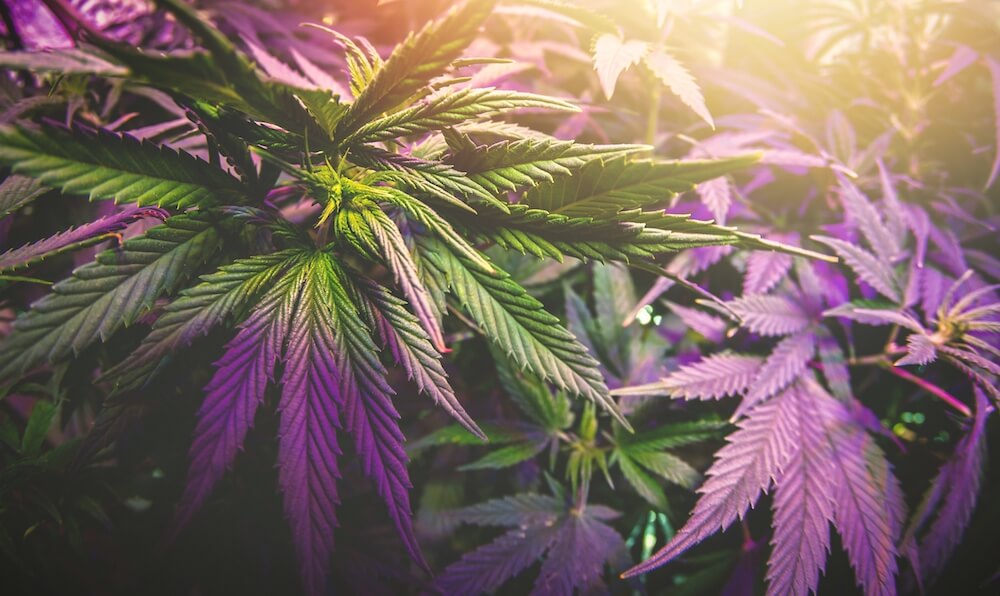
Growers have various objectives when cultivating cannabis. However, maximizing the quantity of THC and other cannabinoids is a common goal for both medical marijuana and recreational cannabis farmers.
Growing potent cannabis isn’t set in stone. Genetics and appropriate cannabis production methods work together to produce buds with a high THC content. Let’s get to it!
Why Increase THC Levels?
- Increased mental and psychoactive effects with the same dose of cannabis
- For alleviating nausea, some forms of pain, spasticity, certain symptoms of multiple sclerosis, etc., many medical cannabis growers aim for high THC levels.
- Methods for increasing THC levels also result in higher cannabis yields overall.
Not all growers aim for the highest THC content possible, some may prefer additional cannabinoids in particular strains. For instance, many medical marijuana farmers favor low-THC, high-CBD cannabis since it is non-psychoactive and can be useful to people seeking relief from seizures or anxiety.
What boosts THC concentrations and overall potency?
- Individual and Strain Plant Genetics
Your plant’s genes are undoubtedly the most crucial factor in cannabis potency. The “upper limit” on how much THC and other cannabinoids your plant can ever generate is determined by its genetic makeup. And as such, it no surprise that recreational cannabis growers often prefer top hybrid strains for their unwavering potency.
Although you can employ grow techniques to increase the THC within that range, you will never be able to surpass the restrictions imposed by the genetics of your preferred strain.
That is, if the genetics of your plant can only produce 20% THC at maximum and you don’t grow the plant properly, you might obtain less than 15% THC in your buds. But no matter what you do, you’ll never be able to get it above 20%.
Starting with potent, high-THC feminized seeds from a reputable seed bank is crucial if you want to get high THC and potency levels.
- Harvesting
A lot of cannabis farmers prematurely harvest their buds, which significantly lowers yields and potency. During the flowering phase, there is a 2 to 3 week window when plants are “mature” and buds contain the most THC. The majority of the white hairs (pistils) on the buds have darkened and curled in at this time, and the small resin glands (trichomes) on them have turned milky white. This is the best time to harvest your buds.
At all cost, avoid harvesting buds too early because they occasionally have “speedy” effects or can give certain individuals headaches.
The cannabinoid composition in the buds continues to vary if the plant is allowed to continue growing after it is considered “done.” Although the euphoric effects of THC may be slightly diminished, buds harvested later tend to have a more relaxed effect. Buds eventually lose a lot of their power if they are allowed to grow for an extended period.
- Care for the Plant While Buds Develop
The trichomes in the buds are where most of the THC and “potency” are stored. You need a strong, healthy cannabis plant with lots of bud sites receiving direct light during the flowering period if you want your cannabis to produce the most potent buds possible. Frequent plant health errors like underwatering, overwatering, root issues, heat stress, irregular light cycles, and nutrition issues must be avoided. Maintain equilibrium and stay away from environmental extremes. Give your cannabis plant everything it wants.
Healthy, green leaves are typically a good indicator. You may significantly improve your overall bud quality and also maximize THC levels by maintaining plants in good condition and avoiding the grow area becoming overly hot or humid during the second half of blooming.
- Light Intensity
Cannabis can grow in relatively low light levels. But, without very intense light during the flowering period, it will not produce appreciable amounts of bud. Bud growth in cannabis is fueled by light. Outdoors, your plant needs direct sunshine to grow to its greatest potential, and indoors, the largest levels of THC are produced under strong, bright grow lights (such as LEDs, LECs, or MH/HPS grow lights).
- Curing Process
There is a lot of evidence that the curing process, which involves shaking dried buds after they have dried, improves the perceived potency of buds, even though there is no proof that it directly raises THC levels.
The effects of THC and other cannabinoids appear to be affected and “intensified” by chemical changes that take place throughout the curing process.
For marijuana cultivators, the curing procedure has additional advantages. For instance, even though cannabis buds smell fantastic during the blossoming stage, they may smell like cut grass or hay if improperly dried. The cannabis plant’s natural flavor and aroma are restored throughout the curing process, which also aids in eliminating the undesirable grassy taste and smell.
Finally, uncured and early-harvested buds may result in “speedy” thinking or headaches in certain users.
Conclusion
While certain methods will undoubtedly enhance the amount of THC your cannabis produces, other methods may also improve potency but their results are less clear. As long as you choose the appropriate strain, provide lots of strong light, take excellent care of your plants, and harvest/dry/cure your buds, you will always produce high-THC buds.
If you want to increase yield and potency altogether, you can procure feminized seeds from a top seed bank like the Herbies. They offer the best feminized seeds for sale on there.





